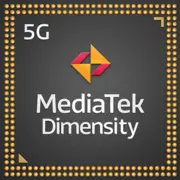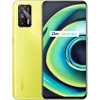MediaTek Dimensity 1100

MediaTek Dimensity 1100: Power and Balance in Mid-Range Smartphones
(Relevant as of April 2025)
Introduction
MediaTek Dimensity 1100, introduced in 2021, remains a popular processor for smartphones in the price range of $300–500. Despite the emergence of new chips, it retains its relevance due to a successful combination of performance, energy efficiency, and support for modern technologies. In this article, we will analyze what sets this SoC apart, who it is suitable for, and how it compares to competitors.
1. Architecture and Process Technology: The Foundation of Stability
CPU: 8-Core Configuration
The Dimensity 1100 is built on the ARMv8.2-A architecture and includes:
- 4 high-performance Cortex-A78 cores with a frequency of up to 2.6 GHz for resource-intensive tasks (gaming, rendering).
- 4 energy-efficient Cortex-A55 cores with a frequency of 2.0 GHz for background processes.
Total L2 cache size is 320 KB, which accelerates data processing. The 6 nm process (TSMC N6) ensures low power consumption (TDP of 10 W) and reduces heating.
GPU: Mali-G77 MC9
The Mali-G77 graphic accelerator with 9 cores supports:
- Resolution up to 2520×1080 pixels (144 Hz) or 90 Hz for QHD+.
- API Vulkan 1.1, OpenCL 2.0.
- HyperEngine 3.0 technology for optimizing gameplay (load prediction, latency reduction).
Conclusion: The architecture is ideal for balancing performance and battery life.
2. Real-World Performance
Gaming
- In Genshin Impact on medium settings — stable 50–55 FPS.
- In PUBG Mobile (Ultra HD, 60 FPS) — no drops in frame rate.
- Support for 120 Hz in less demanding games (Call of Duty: Mobile).
Multimedia
- 4K@60fps video decoding (H.265, AV1).
- HDR10+ support for content on streaming services.
AI Applications
- AI APU 3.0 accelerates photo processing (noise reduction, autofocus), voice assistants, and AR applications.
Power Consumption and Heating
- The 6 nm process and optimization of Cortex-A55 cores reduce power consumption in standby mode.
- In gaming, the smartphone heats up to 42–45°C, but throttling (frequency reduction) does not occur due to cooling systems in devices (for example, the Xiaomi Redmi Note 11 Pro+ 5G).
3. Integrated Modules: The Future of Connectivity
- 5G Modem: Support for Sub-6 GHz (up to 4.7 Gbps), Dual SIM 5G.
- Wi-Fi 6 (up to 2.4 Gbps) and Bluetooth 5.2 with the improved LC3 codec for audio.
- Navigation: GPS (L1+L5), GLONASS, Galileo, QZSS.
Feature: No support for mmWave 5G (relevant only for the USA) and Wi-Fi 6E.
4. Comparison with Competitors
Snapdragon 778G (Qualcomm):
- Better in single-threaded loads (Geekbench 6 Single-Core: 1180 vs 1107).
- Weaker GPU (Adreno 642L vs Mali-G77).
- Device prices: $350–550.
Exynos 1080 (Samsung):
- Higher performance in games (Mali-G78 MP10).
- More heating (5 nm process, but less efficient cooling).
Conclusion: Dimensity 1100 wins in the balance of price and capability, especially for 5G smartphones under $450.
5. Use Cases
Gaming
- Recommended devices with 120 Hz screens and liquid cooling systems (Realme Q3 Pro).
Everyday Tasks
- Instant app launches, smooth social media operation, streaming.
Photo and Video
- Supports cameras up to 108 MP and recording in 4K@60fps.
- AI enhancement for detail and color reproduction.
6. Pros and Cons
Pros:
- Optimal device price.
- Support for 5G and Wi-Fi 6.
- Energy efficiency.
Cons:
- No support for mmWave 5G.
- In 2025, it falls behind new chips (Dimensity 8300) in AI performance.
7. Practical Tips When Choosing a Smartphone
- Cooling: Look for models with vapor chambers or graphite coatings.
- RAM: At least 8 GB for gaming.
- Screen: AMOLED with 90–120 Hz for smoothness.
- Typical Devices: Xiaomi Redmi Note 11 Pro+ 5G ($380), Realme Q3 Pro ($320), Vivo V23e 5G ($400).
8. Final Conclusion: Who is Dimensity 1100 Suitable For?
This processor is an ideal choice for those looking for:
- A smartphone under $500 with 5G and smooth performance.
- A device for gaming, streaming, and photography without overspending.
- Reliable battery life (a 5000 mAh battery lasts 6–8 hours of screen time).
Key Benefits: Value for money, future readiness with 5G, and no overheating.
P.S. Even in 2025, smartphones powered by Dimensity 1100 remain "dark horses" in the market, proving that four-year-old technology can still be relevant with smart optimization.
Basic
4x 2 GHz – Cortex-A55
GPU Specifications
Connectivity
Memory Specifications
Miscellaneous
Benchmarks
Phones with Dimensity 1100





Comparison of Devices with Dimensity 1100
Compared to Other SoC
Share in social media
Or Link To Us
<a href="https://cputronic.com/soc/mediatek-dimensity-1100" target="_blank">MediaTek Dimensity 1100</a>